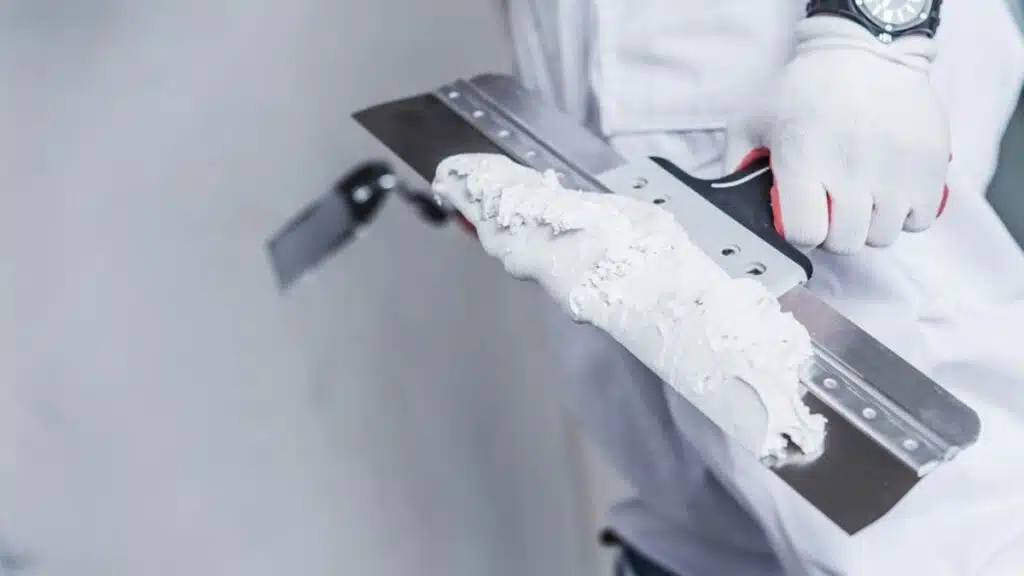
Want to elevate your walls? Contemporary style skews towards flat walls, which keep a modern and clean look. But if you’re looking to level up the wall’s design beyond paint or wallpaper, consider adding texture to your walls for a little extra oomph.
Wall texture is another way to add style and flare to your home. These aesthetic textures add a dose of personality to a space but also serve an important function. Drywall is notably used to mask damages, knicks, and general imperfections.
In this guide, we’ll learn more about common types of drywall textures for walls and ceilings. Texturing can be a design element in any space, but it can also be a tactic to cover marks or repairs.
What is Drywall Texture?
Drywall texture — especially under the guise of walls and ceilings — is made with gypsum and paper backings that create lines, shapes, ridges, knobs, and other designs in various lengths, sizes, and widths, creating a unique appearance and surface. Drywall texture can look and feel uneven and protruded while retaining eye-catching patterns.
There are plenty of varieties and techniques to explore when it comes to wall texture. Whether you’re thinking about your new home or revamping your current space, consider incorporating drywall texture to add a personal touch.
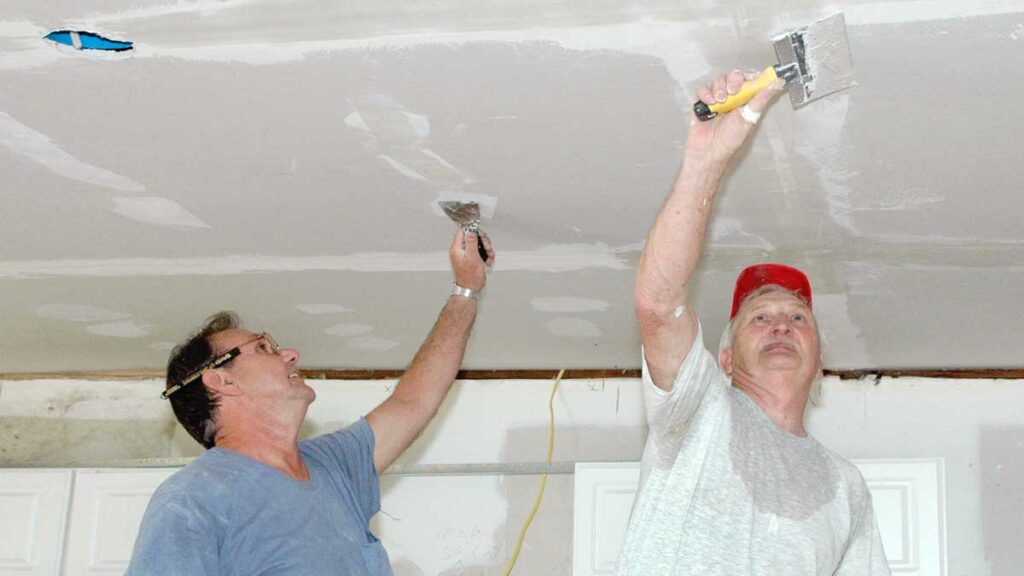
Types of Ceiling Texture
Crows Feet
No, you’re not going to invite a pack of crows into your abode to dance on your ceiling. In this effect, two round or oval-shaped brushes are used to create rounded, stompy lines and long but hair-thin swooshes.
Popcorn
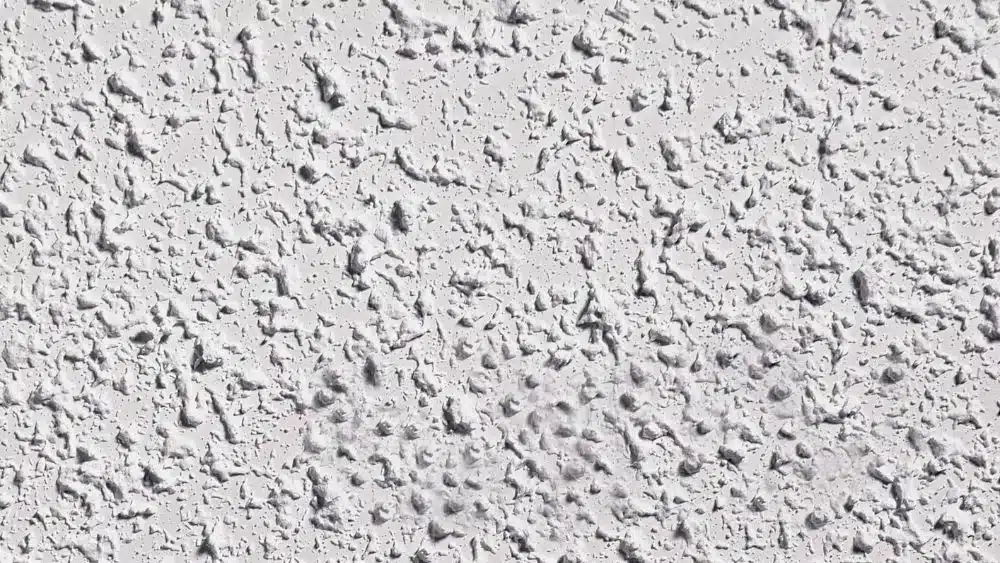
One of the most popular—if not, classic—drywall textures is the popcorn ceiling. This option gets its moniker from the nooks, crannies, and irregular shapes that produce a popcorn-like effect on the applied surface.
Rosebud
Love flowers? This option is for you. A perfectly circular shape (thanks to a round brush) creates bristly, petal-like lines and shapes which yield a flower or rosebud-style design. In order to apply this drywall texture, you’ll follow a similar brush stomp method.
Skip Trowel
Similar to the stomp brush, this layering effect takes drywall mud in thick slabs and smoothes over the substance, creating a thick, icing-like appearance with a trowel. Much like frosting a cake, the layers and angled lines are best created at random, for a more whimsical effect.
Spray Sand
A sandy texture (to perfectly compliment beachy homes), with the likes of sand, mud, primer, and water is created and applied with a hopper gun. Sprayed much like an airbrush, the effect is created with a thin overlay of a subtle sandy finish.
Stomp Brush
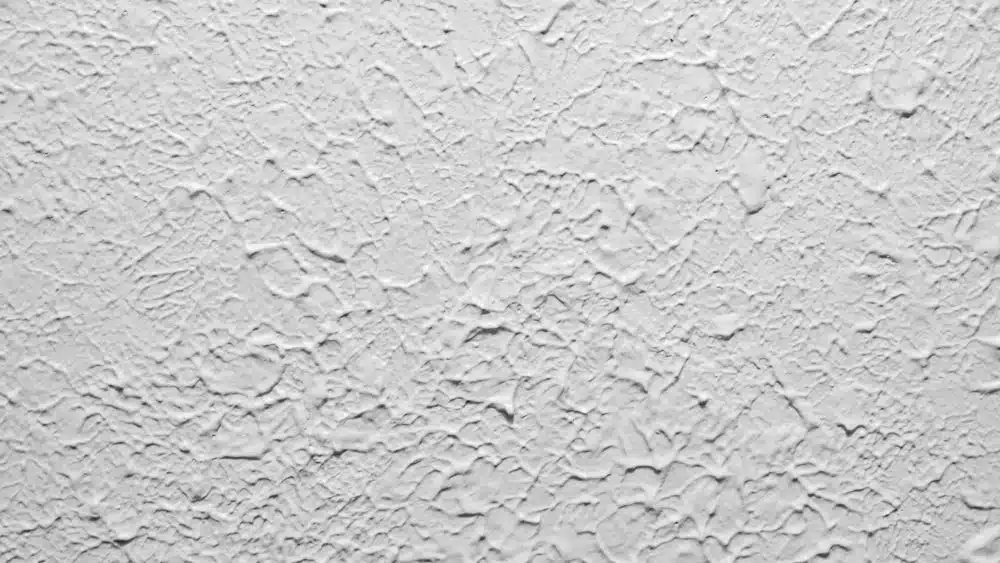
Imagine a painter’s brush going wild, and that’s a stomp brush ceiling. Essentially, all you have to do is dip a large dry brush into drywall mud and press the mixture onto the ceiling. And there you have it–the thick, drippy lines and curved angles create a freeze-frame brushstroke effect.
Types of Texture for Walls
Bas-Relief
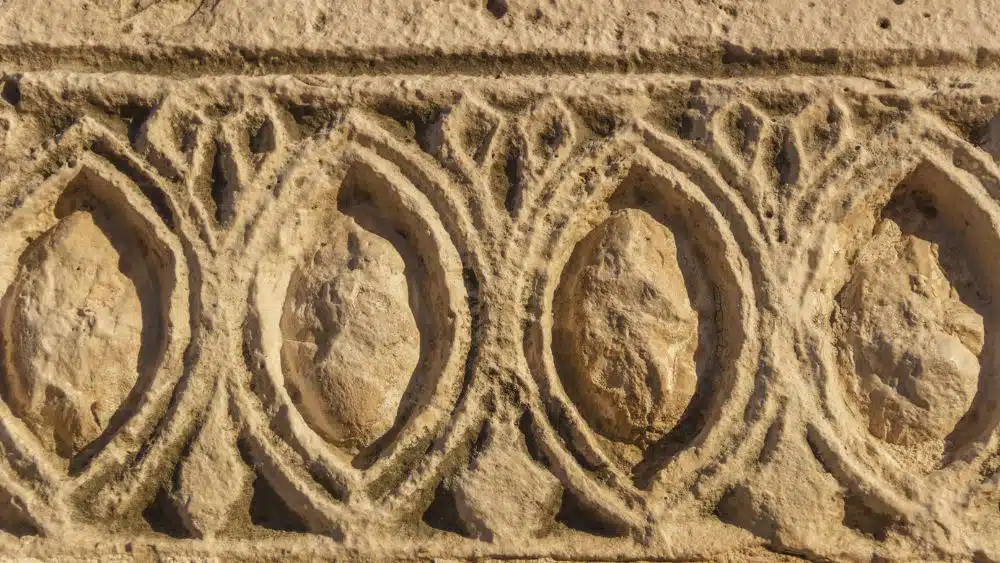
Sculptures and art can be drywall, too! Romantic filigrees and curves abound with bas-relief drywall. This eye-catching style makes the sculpture or design feel as if it is literally coming out of the wall. While high on presence and looks, this style is complicated and would be best suited for a professional application.
Orange Peel
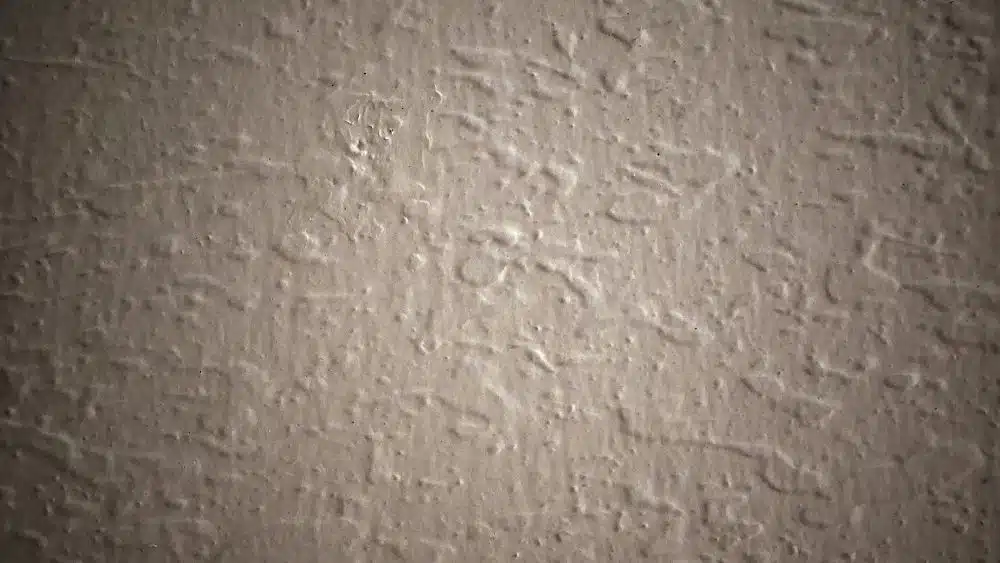
Picture the ripe and juicy skin of an orange. Now, imagine those small dimples and divots as a wall texture. Fun and cheeky, right? Orange peel drywall texture can come in a variety of widths: fine, medium, and heavy. Think of this texture like a font, ranging from a thin weight to a heavy, bolded shade. This crackly and slightly cragged texture is subtle, with soft curves.
Comb
Love art deco motifs? Comb drywall texture is just the thing. This fan-like shape made with the grooves from a toothed trowel evokes a storied and iconic kind of style. Even better: this pattern is utterly easy to recreate on your own!
Knockdown
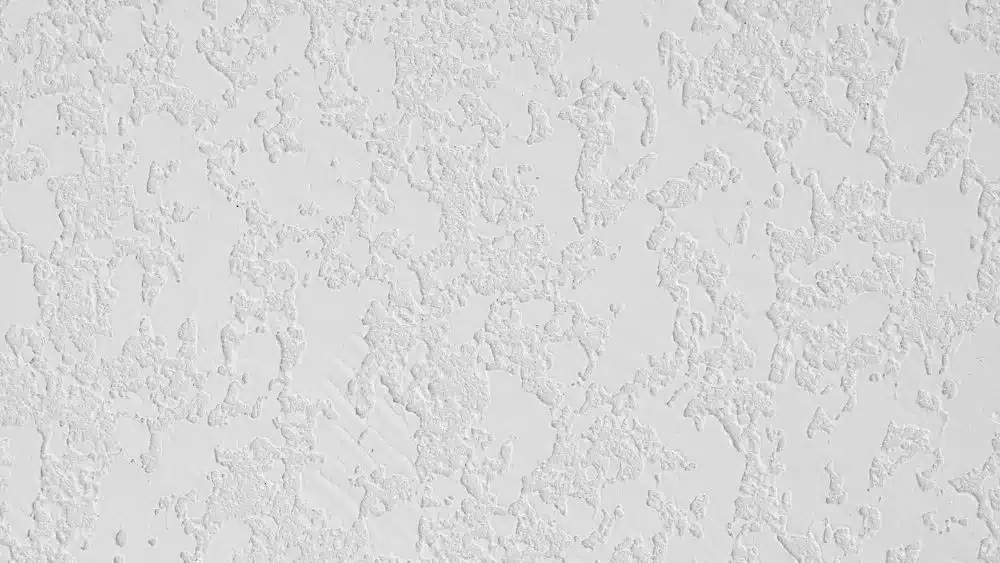
This drywall texture can apply to any style but once the effect is applied, the shape or raised drywall is “knocked down” on the surface with a knife. This unique pattern resembles a rustic, cottage-core style.
Lace
Radiant, romantic, and sultry texture right this way. A lace-like pattern design outfits walls with a spray effect (without using sand).
Sand Swirl
Elevate your home with all the relaxing vibes, courtesy of the sand swirl. Whether it’s a carefree mood you want to create or add to a beachside home, the sand swirl mixes combing techniques with the sand spray methodology for a mood-boosting effect. Similar to the comb pattern, sand swirl can be recreated with rows of fan shapes to create interlocking shapes, spirals, or even set at half-shapes for some interesting flair.
Venetian Finish
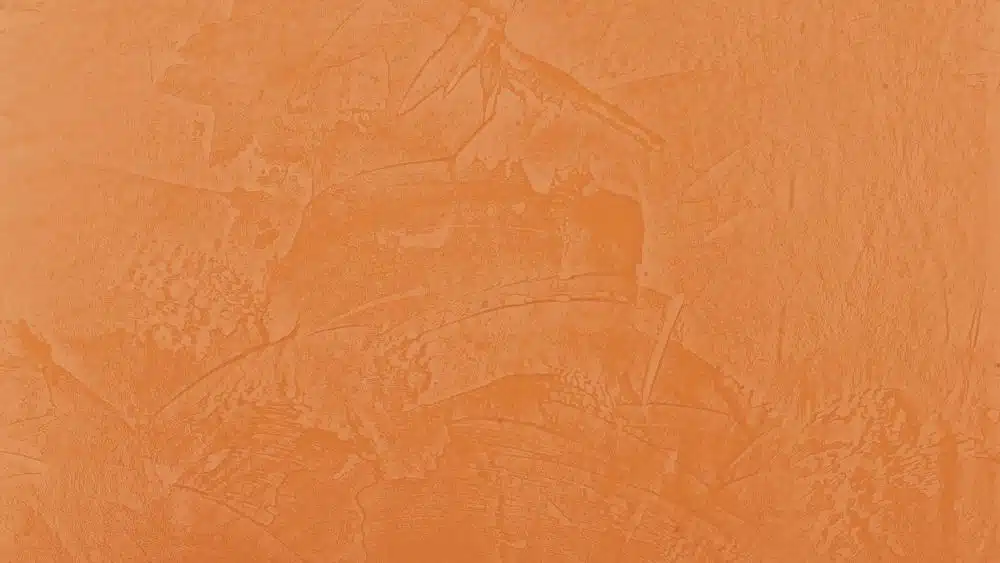
Think of ancient temples and old cathedrals. Almost dark academia-like in its mood and style, the Venetian finish gives a dramatic look by mixing marble dust with drywall.
Other Types of Wall Textures
Let’s focus on a few other types of wall textures. These are a few new and inventive ways to incorporate drywall into your home. Keep in mind that coarser textures (like popcorn or orange peel) can hide flaws easily compared to flatter, glossier surfaces.
Cardboard
It might seem a little DIY, but it’s certainly easy. Cardboard drywall texture uses a simple piece of cardboard (yep, really)! Use a stiff piece of cardboard and cut an edge to use the corrugated design to apply geometric designs.
Faux Brick
Minimalists, city dwellers, and industrial fans are into the much-loved faux brick. This plaster combination gives the impression of brick panels when applied with the right tools.
Hawk and Trowel
Love simple—and soothing—wave shapes? Consider hawk and trowel, which mimics long, sloping wave shapes. Want to make a splash in your space? Opt for this one, however, you may want to consider hiring a contractor for hawk and trowel designs. The texture can take a bit of time to get the hang of and may be way easier for a pro to do.
Machine Brocade
Is it industrial or romantic? Don’t let the name fool you. Machine brocade is a sleek and modern texture known for its defined and elongated shapes. This style is especially popular for covering up wall damages, as the defects will be virtually undetectable after application.
Monterrey Drag
This popular drywall is a fan favorite among homeowners because it’s simple to apply independently. To start, apply a dry compound to the wall. Do not let the compound dry completely—as the material sets, scrape and shift the compound to make deliberate textures and shapes.
Multicolored
You might imagine drywall as opaque and pale white. But multicolored tones and textures are totally possible. All it takes is applying one layer of plain drywall (the standard white or eggshell hue), and then applying a second layer of the same drywall in a different color. After this initial application, you can apply a brush or trowel for your design of choice.
Right Angle
If you’re a fan of angular designs, right-angle texture is just the thing for you. This style incorporates a trowel and placing it neatly at a right angle against the wall. The result? Distinctive and even, clean lines.
Scarred
Similar to thick layers (see below), scarred is a drywall texture applied in thick overlapping layers. When finished, the visual leaves a cut-up, rough appearance like scars.
Shiplap
For a more rustic feel, go for shiplap. This style is much more involved, as it requires the use of cladding planks or painting indented parallel lines.
Slate
Similar to shiplap above, slate drywall incorporates randomly sized wooden slates to create a pattern of your choosing.
Slap Brush
The name says it all. Slap brush texture is a technique that resembles a painter’s brush slapping against a canvas. Think long, irregular-shaped textures created by brush bristles which create an artsy, bohemian effect.
Spanish Lace
Have a flair for the dramatic? Enter, Spanish lace. This particular texture evokes a sense of charm and timeless grace. The pattern echoes a lace-like shape and can take a fair amount of skill. Definitely tap a professional for this job for an utterly elegant wall (or ceiling).
Thick Layers
Swooping thick layers abound, and it’s incredibly easy to apply. Simply pile on the drywall in thick, overlapping layers (like buttering toast).
Tuscan
Travel to the Italian countryside with Tuscan texture. This element has similarities with Venetian drywall, but this option is more pronounced.
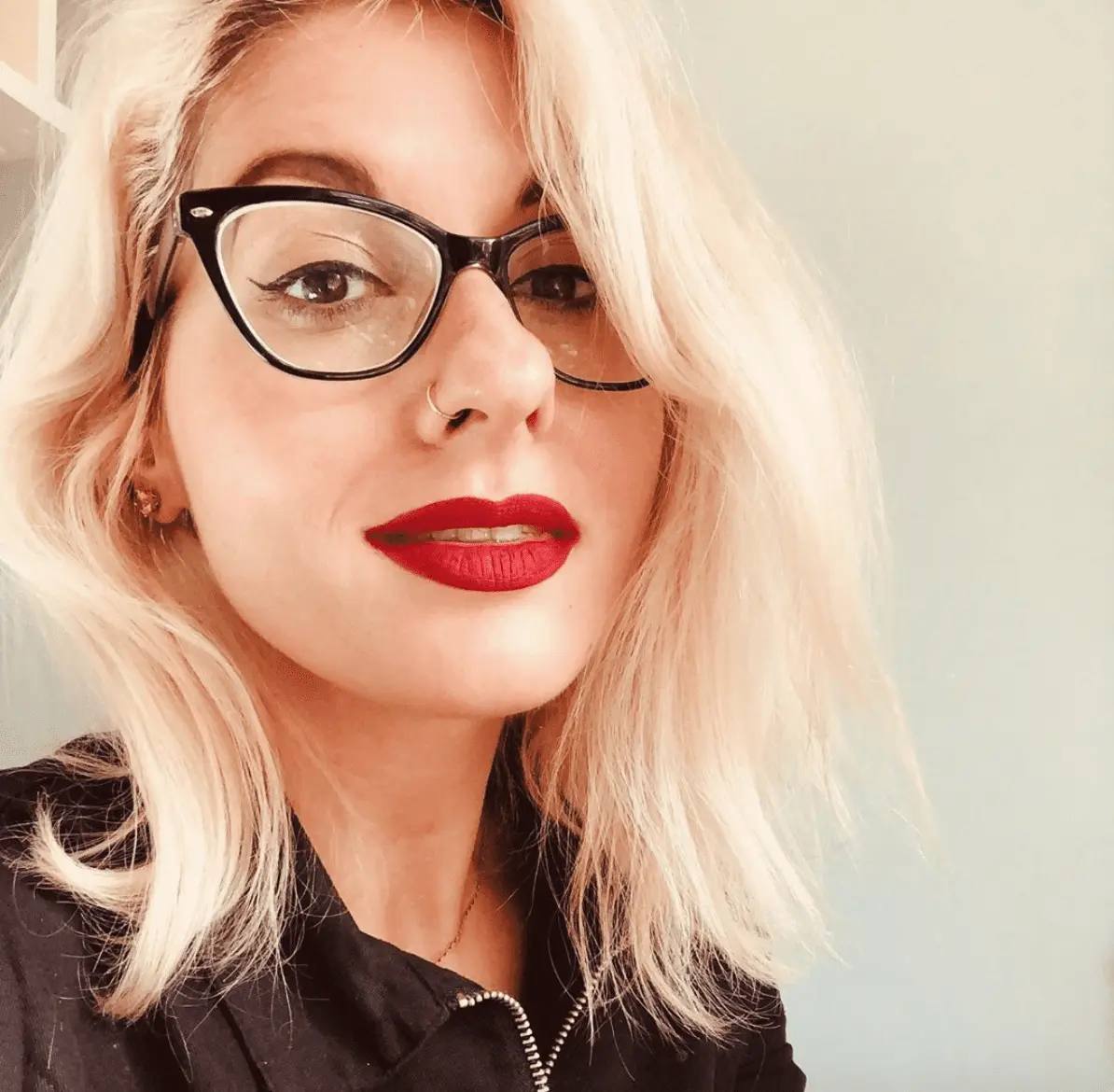
Stephanie Valente is a Content Director and Editor in Brooklyn, NY. She’s previously held writing and social media positions at Barkbox, Men’s Journal, and currently works at a full-service advertising agency. She’s a self-confessed home and design enthusiast. Stephanie is an award-winning poet and fiction writer. When she’s offline, you can find her taking a yoga class, running, hanging out with her rescue dog Pepper. Find her on stephanievalente.com.
 What Is An Escrow Shortage?
What Is An Escrow Shortage?